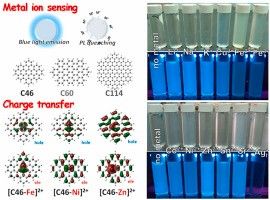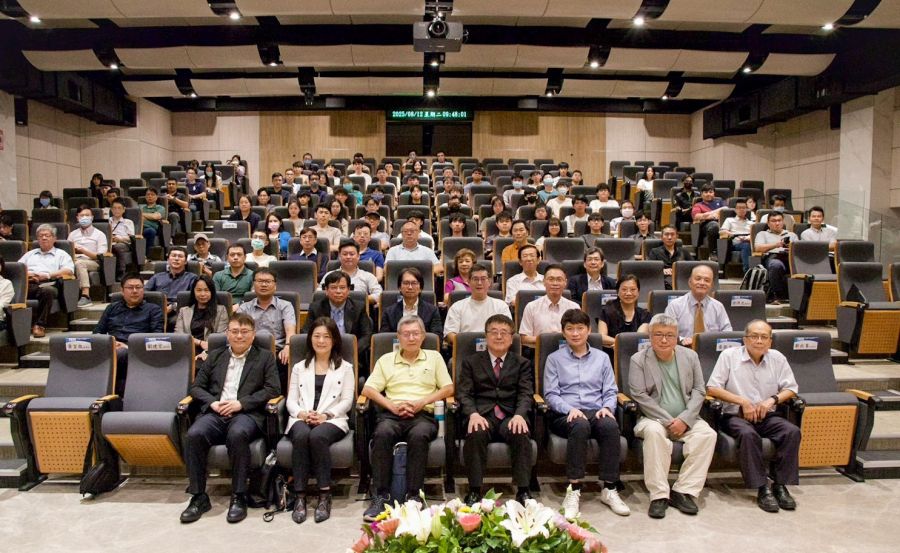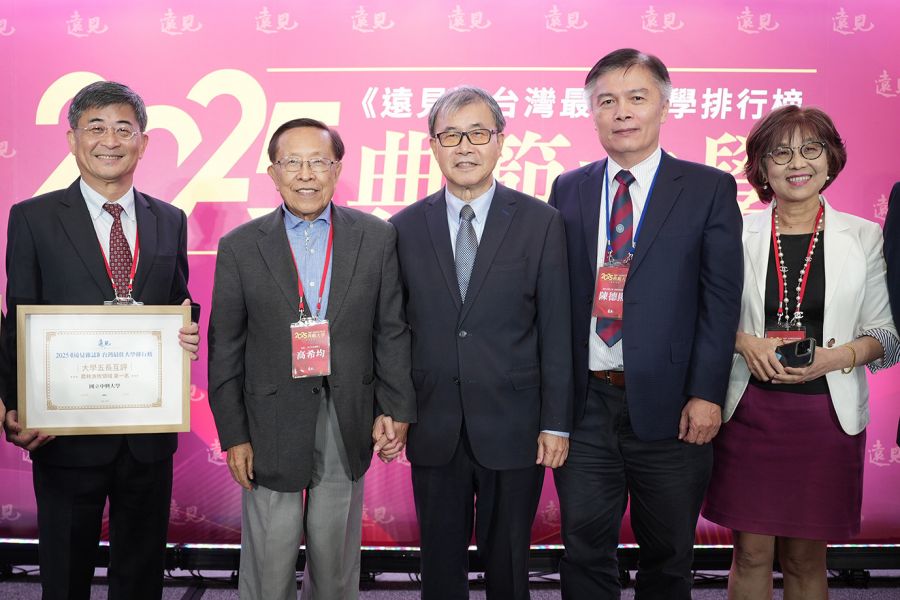循環農業:農業廢棄物高價值化【環境工程學系/林坤儀特聘教授】
| 論文篇名 | 英文:Photoluminescence quenching of thermally treated waste-derived carbon dots for selective metal ion sensing 中文: 用於選擇性金屬離子傳感的熱處理廢物衍生碳點的光致發光猝滅 |
| 期刊名稱 | Environmental Research |
| 發表年份,卷數,起迄頁數 | 2021, 197, 111008 |
| 作者 | Hu, Chechia*; Lin, Tzu-Jen*; Huang, Ying-Chu; Chen, You-Yu; Wang, Ke-Hsuan; Lin, Kun-Yi Andrew(林坤儀) |
| DOI | 10.1016/j.envres.2021.111008 |
| 中文摘要 | 在本研究中,碳點 (CDs) 來自農業廢物苦茶渣的熱氧化,以獲得不同的 sp2/sp3 比率和用於金屬傳感的電子結構。在 700 °C 下煅燒獲得的 CD 在不同溫度下處理的所有樣品中表現出最高的光致發光 (PL) 量子產率 (QY),為 11.8%。這些 CD 具有高度的石墨化,導致強烈的 π-π* 電子躍遷,因此具有高 QY。通過在 320 nm 激發波長下監測它們的 PL 強度,CD 的強光致發光可用於感應金屬離子 Ag+、Sr2+、Fe2+、Fe3+、Co2+、Ni2+、Cu2+ 和 Sn2+。金屬以Ag+>Fe2+、Fe3+、Ni2+>Sr2+、Co2+、Cu2+、Sn2+的順序抑制PL強度,這表明CDs表現出較高的金屬離子檢測能力和選擇性。使用 CD 檢測 Fe3+ 在 10-100 ppm 的範圍內進行,LOD(檢測限)值為 0.380 ppm。理論計算表明,Ag+、Sr2+ 和 Sn2+ 誘導了電荷轉移激發,而 Fe2+ 和 Ni2+ 通過與 sp2 簇的絡合誘導了 d-d 躍遷。電荷轉移激發和 d-d 躍遷阻礙了 sp2 簇的 π-π* 躍遷,導致猝滅效應。另一方面,Li+、Na+ 和 K+ 離子沒有改變 sp2 簇的 π-π* 躍遷,導致猝滅效應可以忽略不計。總之,可以定制源自苦茶渣的 CDs 的氧化水平和電子結構,並且 CDs 被證明是一種簡便、可持續且環保的金屬傳感材料。 |
| 英文摘要 | In the present study, carbon-dots (CDs) were derived from the thermal oxidation of an agricultural waste, bitter tea residue, to obtain different sp2/sp3 ratios and electronic structures for metal sensing. The CDs obtained from calcination at 700 °C exhibited the highest photoluminescence (PL) quantum yield (QY) of 11.8% among all the samples treated at different temperatures. These CDs had a high degree of graphitization, which resulted in a strong π-π* electron transition, and hence in a high QY. The strong photoluminescence of the CDs could be used to sense the metal ions Ag+, Sr2+, Fe2+, Fe3+, Co2+, Ni2+, Cu2+, and Sn2+ by monitoring their PL intensity at an excitation wavelength of 320 nm. The metals inhibited the PL intensity in the order Ag+ > Fe2+, Fe3+, Ni2+ > Sr2+, Co2+, Cu2+, Sn2+, which demonstrated that the CDs exhibited high metal ion detection capability and selectivity. The detection of Fe3+ using CDs was performed in the range of 10–100 ppm with a LOD (limit of detection) value of 0.380 ppm. Theoretical calculations demonstrated that Ag+, Sr2+, and Sn2+ induced charge transfer excitation and that Fe2+ and Ni2+ induced d-d transitions via complexation with the sp2 clusters. The charge transfer excitation and d-d transitions hindered the π-π* transition of the sp2 clusters, leading to a quenching effect. On the other hand, Li+, Na+, and K+ ions did not alter the π-π* transition of the sp2 clusters, resulting in a negligible quenching effect. In summary, the oxidation level and electronic structure of CDs derived from bitter tea residue could be tailored, and the CDs were shown to be a facile, sustainable, and eco-friendly material for metal sensing. |
| 發表成果與本中心研究主題相關性 | 透過本研究可進一步建立開發本研究計算所需之觸媒材料,並釐清可適合應用之環境條件! |







